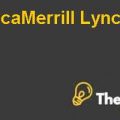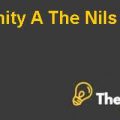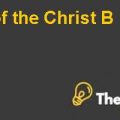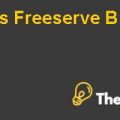Introduction
Walt Disney is one of the world’s leading producers and providers of the entertainment and information. The company was founded in 1938 as the successor to the energetic motion picture business established by Walt and Roy Disney. The early films had immortalized cartoon characters created by Disney brothers such as Mickey Mouse and Donald Duck.
In addition to the domestic entertainment and reaction revenues from Disneyland and Walt Disney World, the company received royalties, paid in Yen on certain revenues generated by Tokyo Disneyland. Furthermore, Disney produced motion pictures for the theatrical, television and video markets for audiences around the world.
The financial performance seems to be excellent as consolidated revenues for Walt Disney and its subsidiaries increased by almost 27% in 1984 to $1.7 billion and total assets grew by 15% to $2.7 billion.
Problem statement:-
The finance director of the company is concerned about the possible foreign exchange exposure due to future Yen royalty receipts from the Tokyo Disneyland. These Yen royalties had increased significantly during the last year.
Mr. Anderson had considered hedging techniques using foreign exchange options, features, and forwards as well as he thought about swapping out of existing dollar debt into a Yen liability. He had focused his attention on a possible 15 billion ten-year term loan with interest of 7.5% paid annually.
The Walt Disney Harvard Case Solution & Analysis
Analysis:-
Swaps
A swap is an agreement between two counterparties to exchange two streams of cash flow. The purpose is to change the character of an asset or liability without liquidation.
Furthermore, the issuer of swap can contract to pay a floating rate and receive a fixed rate or vice versa. The swaps can be executed in advance of the issuance of either fixed rate or variable rate debt and at any time during the outstanding life of the underlying bonds.
Futures
A future is a contract between two companies or individuals requiring late delivery of underlying asset (at a contracted price a date) or a final cash settlement. It is obligatory on both parties to perform and fulfill the terms. A customized futures contract is called a forward contract.
Recommendation
It is recommended to the company to choose the ECU/ Swap, as it will reduce the cost of 0.743% and makes ECU 400,000. Furthermore, it gives better IRR than the other options. I have included some exhibits to support my recommendation.
Exhibits:-
| Semiannual payment bullet loan | |||||
| principle | 15000000000 | after fee | 14,887,500,000 | ||
| term | 10 years | ||||
| Annual percentage | 7.50% | annual payment | 562,500,000 | ||
| front end fee | 0.75% | fee payment | 112,500,000 | ||
| IRR | 8% | ||||
| Disney Swap | cash flow = Yen | French Swap | Cash flow = ECU | ||
| year | year | ||||
| 0 | 14,445.15 | 0 | 80.00 | ||
| 0.5 | (483.23) | ||||
| 1 | (483.23) | 1 | (7.35) | ||
| 1.5 | (483.23) | ||||
| 2 | (483.23) | 2 | (7.35) | ||
| 2.5 | (483.23) | ||||
| 3 | (483.23) | 3 | (7.35) | ||
| 3.5 | (483.23) | ||||
| 4 | (483.23) | 4 | (7.35) | ||
| 4.5 | (483.23) | ||||
| 5 | (1,808.14) | 5 | (7.35) | ||
| 5.5 | (1,764.65) | ||||
| 6 | (1,721.16) | 6 | (23.35) | ||
| 6.5 | (1,677.67) | ||||
| 7 | (1,634.18) | 7 | (21.88) | ||
| 7.5 | (1,590.69) | ||||
| 8 | (1,547.20) | 8 | (20.41) | ||
| 8.5 | (1,503.71) | ||||
| 9 | (1,460.22) | 9 | (18.94) | ||
| 9.5 | (1,416.73) | ||||
| 10 | (1,520.45) | 10 | (17.47) | ||
| Semiannual IRR | 3.45% | Annual IRR | 9% | ||
| Annual IRR | 7% | ||||
This is just a sample partical work. Please place the order on the website to get your own originally done case solution.












